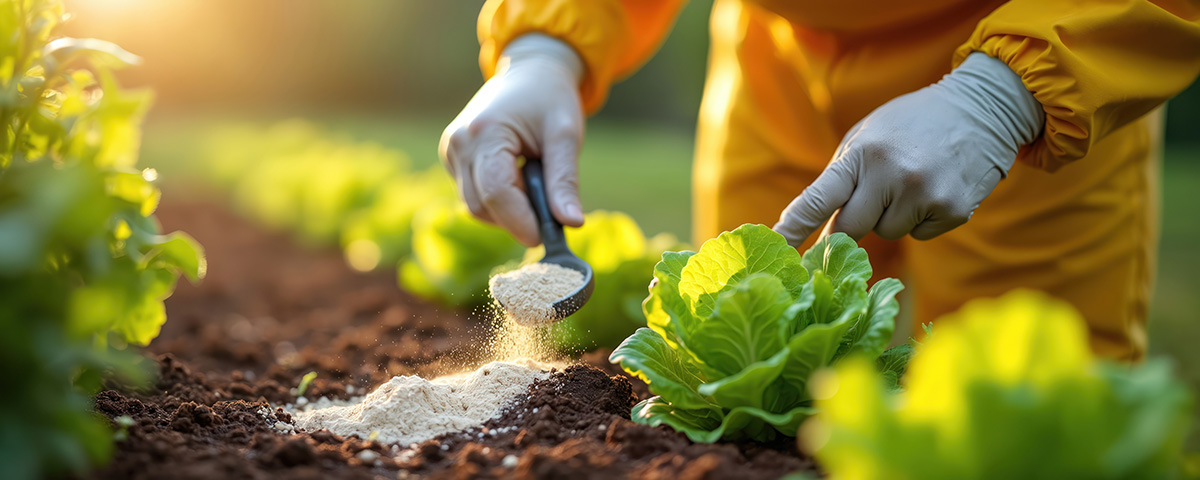
By Sarah Browning, Former Extension Educator in Lancaster County
Pest control — insects, diseases and weeds — is challenging for organic home vegetable gardeners. Start first by preventing pest problems. Next, consider ways to physically protect plants from pests and preserve beneficial insect populations. Finally, use organic or low-toxicity products when chemical control is needed.
Ultimately, organic gardeners may have to accept a higher level of insect and disease damage. Decide for yourself how much damage can be tolerated as a threshold for determining when control is needed.
LOW-TOXICITY PESTICIDES
Before using any pesticide, start by accurately identifying the insect or disease problem. Gardeners can submit pictures of plant problems to Nebraska Extension experts through our Digital Diagnostic Network, https://digitaldiagnostics.unl.edu.
Below are a few products useful in either disease or insect control that may be acceptable to organic gardeners. However, these products typically suppress a pest problem rather than eliminate it. And while they are less damaging to beneficial insects, that does not mean no damage. Always make sure any product purchased is labeled for use in the vegetable garden and follow all directions on waiting periods after application before harvesting again.
• Bacillus thuringiensis — commonly referred to as B.T. and marketed under the trade names Dipel, Thuricide and others. Consists of spores from a soil-inhabiting bacteria that kills the larvae of moths and butterflies, such as armyworm, cabbage loopers, cutworms, corn earworm and tomato hornworm. Will also kill desirable butterfly and moth larva, so apply carefully.
• Copper fungicide — one of the first elements used as a plant fungicide. Provides protection against infection by killing disease pathogens on a leaf or other surface before they infect the plant. Must be applied preventatively. Has no post-infection action. Many formulations of copper fungicides are available in garden stores.
• Diatomaceous earth — finely ground fossilized diatoms, a single-celled form of algae. Their sharp edges scratch and scrape the waxy or oily outer layer of soft-bodied insects causing them to dehydrate and die. Often used for slug control.
• Horticultural oil — highly refined vegetable or mineral oil, which kills insects in several ways, but most importantly, by suffocating them. Oils act like a contact insecticide and provide no residual control, so the insects must be present and in a vulnerable stage of development for an oil application to be effective. Plant damage may occur if used when temperatures are too high.
• Insecticidal soaps — these products are liquid formulations of potassium salts of fatty acids and are effective at controlling some soft-bodied insects such as aphids, mites, leafhoppers and plant bugs. Requires thorough plant coverage and multiple applications. Use soaps with caution, as leaf injury is possible with certain plants.
• Kaolin clay — finely ground natural clay product. When sprayed, creates a fine film on plant surfaces and acts as an irritant, repellent or physical barrier. Heavy use has been found to be harmful to beneficial insects and can result in spider mite infestations.
• Neem — made from neem tree seed extracts and contains either neem oil or the purified active ingredient azadirachtin. Effective as a contact spray or through ingestion. Acts primarily by disrupting normal insect growth, and in some insects, has anti-feeding or egg-laying properties. Quickly broken down by sunlight.
• Spinosad — made by fermentation of a soil bacteria and disrupts the insect nervous system, resulting in paralysis and death. Effective as a contact spray or through ingestion. Kills affected insects in 1–2 days. Toxic to bees and parasitic wasps if sprayed or they come into contact with wet plant surfaces.
• Sulfur — finely ground sulfur can be used either as a dust or spray to prevent diseases and is sometimes used to control spider mites. The chemical may ‘burn’ tender foliage if applied when air temperatures are above 90°F or higher. Do not apply within 20–30 days of applying a horticultural oil, plant damage may result.
Reference to commercial products is made with the understanding that no discrimination is intended and no endorsement by Nebraska Extension is implied. Mention does not imply approval or constitute endorsement by Nebraska Extension. Nor does it imply discrimination against other similar products.